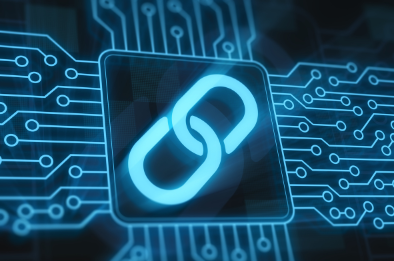Viewpoint on blockchain and traceability
Making blockchain a strong link in the traceability process
Alain Broustail, director of blockchain and traceability activities at Coexya, was recently invited by a journalist from Techniques de l’Ingénieur to present his views on the use of blockchain to improve traceability in industry. Here is a summary of what he had to say.

Traceability: from a constraint to a competitive lever
In an industrial environment subject to strong economic and regulatory pressures, traceability is now much more than an obligation. It is becoming a strategic tool for optimising production processes, improving product quality, enhancing brand image and standing out in increasingly competitive markets.
“Good traceability management is above all a prerequisite for mastering manufacturing methods and identifying optimisation levers throughout the value chain”, explains Alain Broustail.
Product traceability, which has long been confined to compliance with standards, must now also be seen as a factor in sales growth, particularly by making it easier to respond to invitations to tender, boosting consumer confidence and speeding up the marketing of new products.
A fast-changing regulatory environment
Traceability requirements have been strengthened by a number of recent regulations:
- CSRD (Corporate Sustainability Reporting Directive)
- Fight against deforestation (European regulation)
- Corporate Sustainability Due Diligence Directive (CSDDD)
- Digital Product Passport scheduled for 2027
“In addition to declarations, manufacturers must now be able to prove their claims: origin of raw materials, carbon impact, compliance with social legislation”, explains Alain Broustail.
Against this backdrop, reliable, verifiable traceability is becoming an imperative if we are to access European markets and meet the growing expectations of consumers and trading partners.

Blockchain: a pillar of trust for traceability
While blockchain cannot replace traditional traceability management systems, it can become a key element in guaranteeing data integrity.
- Immutability: The information recorded in a blockchain is time-stamped and cannot be modified after the event without leaving traces.
- Security: The distributed architecture limits the risks of data falsification and manipulation.
- Reliability: Data shared between different players becomes more transparent and verifiable.
“By strengthening confidence in the data collected, blockchain enables us to move from a declarative system to genuine digital proof”, emphasises Alain Broustail.
Integrating blockchain into a traceability project
To make the most of blockchain in a traceability project, Alain Broustail shares a number of strategic tips:
- Start by defining the business objectives: avoid using technology as the starting point for building the project. The issue is process optimisation, not technological innovation for its own sake.
- Capitalise on feedback: a large number of pilot projects and use cases now exist, providing valuable lessons on good practice and the pitfalls to be avoided.
- Compare solutions on the market: it is essential to assess the advantages of existing SaaS blockchain platforms versus custom developments, depending on specific needs.
- Remain vigilant when choosing partners: opt for tried-and-tested solutions and reliable publishers rather than following fads.
- Supporting change: a successful traceability project means training and involving all the players in the value chain.
“Blockchain is a powerful ingredient in securing traceability, but it is only part of the cake. A global approach, combining business expertise, regulatory rigour and education, remains the key to success”, concludes Alain Broustail.


